This post reviews how to choose a non-toxic deodorant, and the ingredients to watch for and avoid in deodorants and antiperspirants. The ingredients used in deodorant can be endocrine disruptors, potential carcinogens, skin irritants and more which is why you need to be careful when shopping.
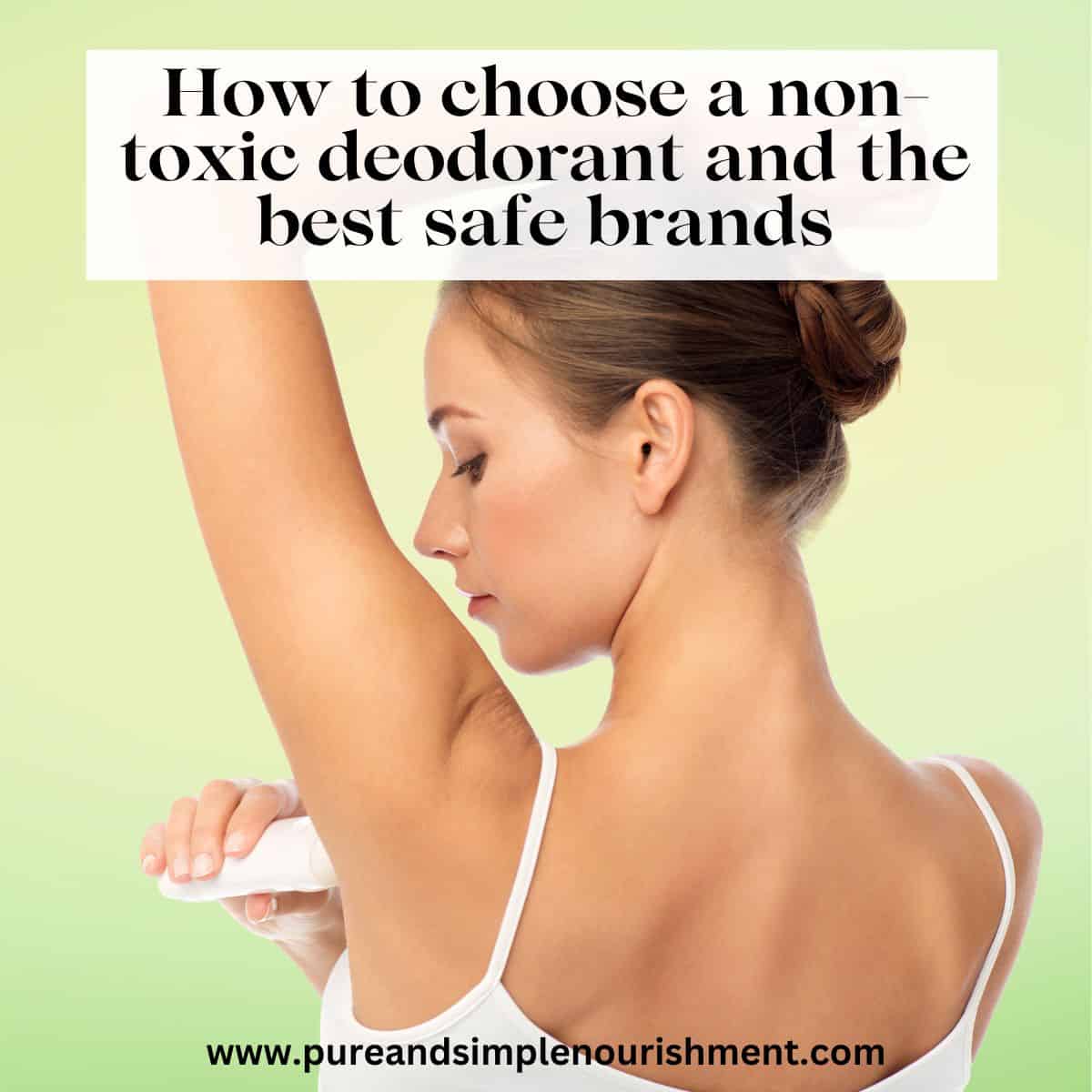
Disclaimer: Some of the links in this post are affiliate links whereby if you purchase the product through that link I make a small commission. This does not cost you anything extra and helps me keep this website running.
Table of Contents
Why wear deodorant?
Many of us wear deodorant to help us smell good. However, our skin is porous, and many of the ingredients that we put on our skin can get absorbed into our bloodstream. For that reason, it's important that the ingredients in our deodorant and other personal care products be safe for health.
Potential risks of deodorants:
Unfortunately, the personal care industries in many counties including the USA and Canada are under regulated, and ingredients that can have potential health risks can be used in personal care products including skincare and beauty products.
When it comes to antiperspirants and deodorants, they can contain ingredients that are known to cause negative health effects including hormone imbalances, skin irritation, allergic reactions, and potentially even cancer.
With that in mind I thought it was important to review the potentially harmful ingredients that can be used in deodorant so that you can avoid them and learn how to choose a non-toxic deodorant. And if you are interested in more non-toxic products you will want to read my post on non-toxic Canadian skincare brands.
Ingredients to avoid in deodorant and their health concerns:
Aluminum
Aluminum or aluminum salts are one of the active ingredients used in antiperspirants to prevent sweating. The aluminum used in antiperspirants can clog pores and sweat ducts and hinder the body’s natural detoxification process by preventing you from sweating (sweating is a way that your body releases toxins, so we don’t want to block this process).
The other concern is that long term exposure to aluminum from deodorant can lead to accumulation of aluminum in breast tissue, which could potentially increase your risk of breast cancer. There are a couple ways that aluminum can do this:
- Aluminum build up can lead to alterations in DNA which can contribute to cancer development.
- Aluminum can interfere with estrogen receptors, and estrogen has a well established role in the development of breast cancer.
Whether or not aluminum in antiperspirants can actually lead to breast cancer is still not clear, as there have been very few studies examining this issue directly, and of the studies that have been done, there have been conflicting results with some showing an increased risk, while others do not.
The most recent study done in 2017, did show an increased breast cancer risk in those using deodorant or antiperspirant, but this is not clear evidence that the aluminum is what caused the breast cancer.
Breast cancer is a complicated diagnosis, influenced by many risk factors, and so at this time, since there is no scientific consensus, the American Cancer Society has not recommended that breast cancer patients avoid the use of antiperspirants.
Years ago, concerns were also raised regarding the relationship between aluminum and kidney disease when dialysis patients were given a drug called aluminum hydroxide to help control high phosphorus levels in their blood. Because their kidneys weren't functioning properly (hence why they are on dialysis), their bodies could not remove the aluminum quickly enough, and it began accumulating in their bodies. It was observed that the dialysis patients who had these high aluminum levels were more likely to develop dementia or Alzheimer's disease.
As a result, the Food and Drug Administration (FDA) requires antiperspirant labels to have a warning that says, "Ask a doctor before use if you have kidney disease." However, practically, it's almost impossible to absorb enough aluminum through the skin to harm the kidneys, even if you do have poor kidney function, so most people should not have to worry about this potential risk.
However, since you don't need aluminum in your deodorant for it to work, my advice it to avoid this ingredient because of the potential health concerns. Why take the risk if you don't need to?
Parabens
Parabens are preservatives found in many beauty and skincare products to help increase their shelf life and stability. The parabens used most often in personal care products are methyl, ethyl, butyl and propyl paraben, which are used as preservatives and antibacterial agents.
Have a look at your deodorant ingredients. Do you see anything ending with the letters "aben"? - if so, that indicates a paraben.
The problem with parabens is that some of them have weak estrogenic and anti-androgenic activity and are endocrine disruptors or hormone disruptors.
Endocrine disruptors and their resulting hormone imbalances can potentially lead to a number of health problems including thyroid disease, infertility, acne, fatigue, weight gain, etc. Parabens have also been linked to breast cancer, skin cancer, decreased sperm counts and infertility.
Fragrances
Another issue with deodorants and many other personal care products are the fragrances used to scent them. If you head down the deodorant isle you will see all sorts of different scents. From fruity to citrus to vanilla to fresh and breezy (what does that even mean by the way?). You get the idea. The problem is that the ingredients used to make these fragrances can be harmful to your health.
Have another look at your deodorant label. Do you see the word "fragrance" or "scent" or "parfum" listed in the ingredient list? If so, I recommend tossing that deodorant. Here's why: fragrances are considered to be trade secrets. This means that a company doesn't have to disclose any of the ingredients used to make that fragrance. Hidden within that word could be hundreds of chemicals or ingredients, some of which could be harmful to your health. And you don't get to know what any of them are.
The ingredients used to make fragrances can be hormone disruptors, allergens, airway irritants, neurological-toxins and ingredients linked to infertility. That's why I recommend avoiding any product, not just deodorant, that uses synthetic fragrances or that won't disclose their fragrance ingredients. The risk just isn't worth it. Basically, avoid any product with the words "fragrance", "scent", "perfume" or "parfum" in the ingredient list.
Phthalates
Phthalates are used to make products flexible and bendy and to help fragrances and scents last longer.
Phthalates can also be included in a products fragrance formula so also be sure to avoid products with the terms fragrance, perfume or parfum in the ingredient lists.
PFAS
Everyday more and more consumer products and personal care products are found to contain PFAS chemicals. I have written about the risks of PFAS in detail before in other posts like the best non-toxic period underwear, the best non-toxic mascaras, the best non-toxic cookware and more.
In brief, PFAS (per- and polyfluoroalkyl substances) are chemicals that provide non-stick, stain and water resistant coatings (for example, Teflon is a PFAS that most people are familiar with). These chemicals are very harmful to human health and the environment because they are persistent, meaning they build up and don’t break down. They remain in our bodies for years, and sometimes even decades after exposure.
PFAS, even at low doses, can be harmful to health and are known to have a number of harmful effects on human health including but not limited to:
- They are endocrine disruptors (also known as hormone disruptors).
- Can lead to metabolic diseases including obesity and diabetes.
- Can contribute to cardiovascular disease (heart disease).
- Increase the risk of allergies and asthma in children.
- Increase cholesterol levels.
- Can decrease sperm counts.
- Can increase the chances of miscarriages.
- Can cause thyroid disease.
- They can increase the risks of certain cancers including thyroid and kidney cancer.
Recently, many deodorants have been found to contain PFAS, which is concerning because scientific evidence shows that PFAS can be absorbed through the skin.
Unfortunately, PFAS aren't usually added to deodorants intentionally, they are often added as a contaminant, so you won't see them listed on ingredient label lists. As such it's important to stick to deodorant brands who test for PFAS contamination to ensure their deodorant is PFAS free (I have included some safe options at the end of this post).
Ethanolamines (DEA, TEA, MEA)
The European Commission and Health Canada prohibit the use of DEA in cosmetics and personal care products due to concerns regarding the formation of carcinogenic nitrosamines. However, these chemicals are still allowed to be used in other countries.
There is also concern that these chemicals can negatively impact male fertility. Animals studies also shown concering neurological effects. TEA is also an immune and respiratory toxin.
To avoid ethanolamines, look for DEA, TEA and MEA when reading ingredient lists.
Benzene
If you missed it, many deodorant and antiperspirant sprays have been recalled recently because they were found to contain benzene. Brands like Old Spice, Secret, Sure, and Brut. Benzene is a known carcinogen and can also cause other health problems like aplastic anemia, so you definitely don't want it in your deodorant or antiperspirant. Note that so far it has only been deodorant and antiperspirant sprays (not sticks) that have been found to be contaminated with benzene (it was a contaminant in the propellant used in the aerosol) so if you use a deodorant stick you don't have to worry about benzene.
Propylene glycol
Propylene glycol can be irritating to the skin and can cause allergic reactions.
PEGS
PEG compounds (PEGS) are created by condensing water and ethylene oxide. While PEG compounds themselves are usually safe for health, they can be contaminated with 1,4-dioxane, which is a known carcinogen and because they are penetration enhancers, depending on what other ingredients are in the product, they can potentially make other toxic ingredients more harmful as well.
Talc
Talc is used in the personal care industry for various reasons including to increase absorbency, as an anti-caking agent, bulking agent, and anti-slip agent. The problem with talc is that it can often be contaminated with asbestos which is a known carcinogen and can cause lung toxicity. Studies also show that cosmetic-grade talc even if it is free of asbestos can still be toxic and carcinogenic.
Triclosan
Tricolsan is an anti-bacterial agent that is added to many products in order to prevent bacterial contamination, and to kill bacteria on the surface of the skin. Triclosan is used so commonly that 75% of Americans have detectable levels in their urine.
Animal studies have shown that triclosan is an endocrine disruptor and other studies show that it can alter your microbiome.
Fortunately, in 2017, triclosan was banned from soaps but it is still allowed in other products, including deodorant.
But don't worry, you don't need to memorize this list of ingredient to avoid in deodorants. I created a free printable for you with a list of ingredients that you should avoid in skincare and cosmetic products:
How to choose a non-toxic deodorant
Of course the safest type of deodorant is no deodorant at all, but I realize that that is not a realistic option for most people. Especially if you are working out or sweating on a regular basis you will likely find that you will need some sort of deodorant to help prevent you from smelling. This is where natural deodorants and safe, non-toxic deodorants come in. Now, non-toxic deodorants are not all created equal. Trust me, I tried about 10 different brands before I found some that worked for me.
I wrote an entire post on this topic, The Best Non Toxic Deodorants to help you find the best non-toxic deodorant for your body and budget. Fortunately, in recent years more safe options for deodorant have become available and there are many safe options that you can now find at drugstores, online and at grocery stores.
The best non-toxic deodorant
Of all the non toxic deodorants that I've tried my personal favourite is:
Primally Pure Deodorant
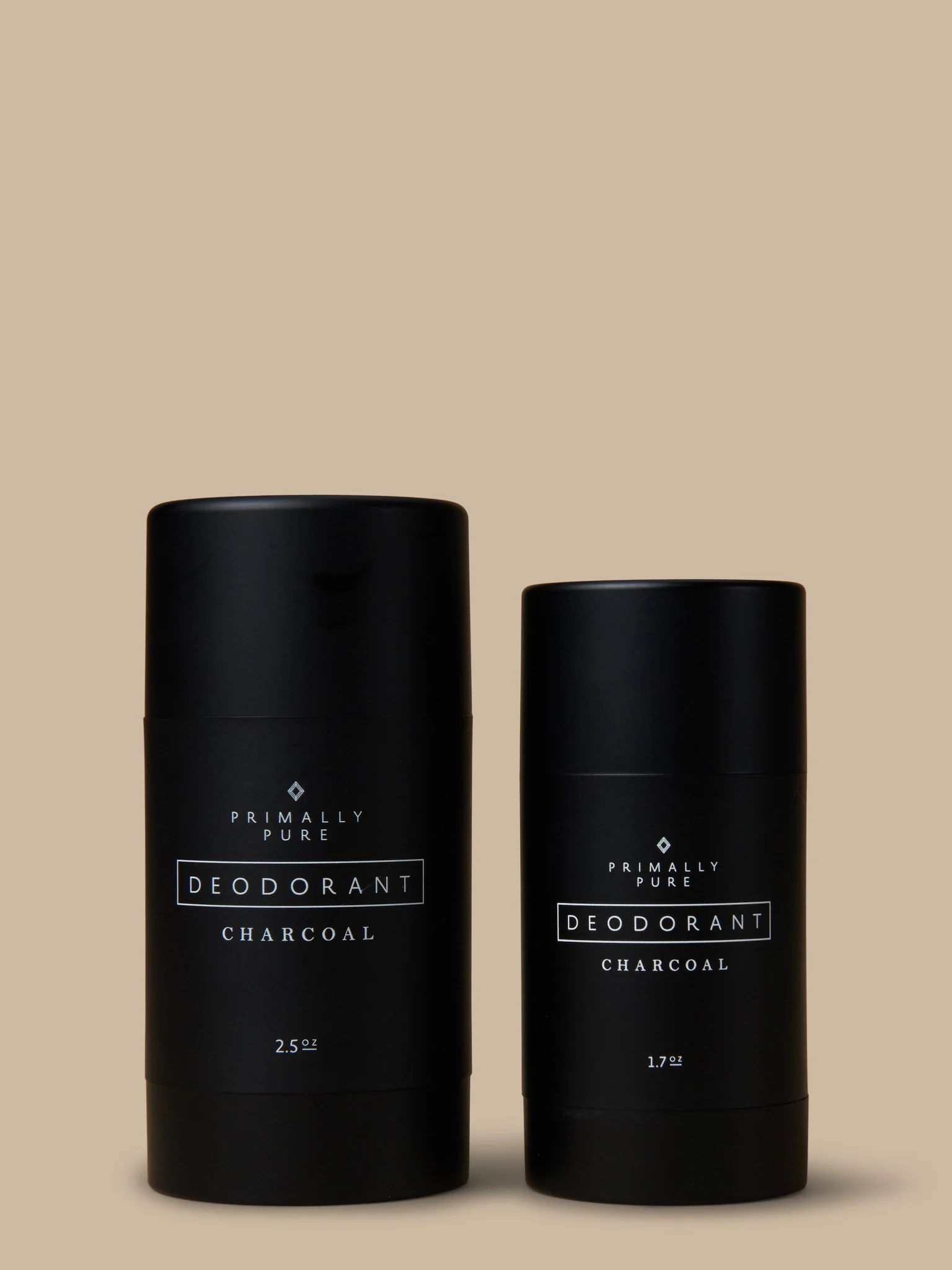
This is my favourite non toxic deodorant. My favourite scents are the lavender and blue tansy. And if you are sensitive to baking soda or have sensitive skin, the baking soda free options are a great choice.
The Primally Pure deodorant is made with all natural ingredients, is paraben free and is only scented with essential oils and contains no artificial or synthetic fragrances. It is also rated a 1 on the EWG skin deep database.
Why I love it:
- It works really well to prevent body odour and is great for both men and women.
- This deodorant does not stain clothing.
- I love the variety of scent options.
- This deodorant has been independently tested for PFAS and found to be negative!
- Their packaging is eco-friendly, being either recyclable or compostable.
Cons:
- Is more expensive than some of the other deodorants on the market.
- If you live in Canada like me the duty fees can be high. If you live in the US this won't be an issue for you.
Shop for Primally Pure deodorant and use the code PUREANDSIMPLE to get 10% off your first order!
How to choose a non-toxic deodorant FAQs:
Natural deodorant can work very well, but some brands do work better than others. As well, every body is different so it may take you a bit of trial and error to find a clean deodorant that works well for you.
You are likely sensitive or allergic to one of the ingredients in the deodorant. One of the most common irritants in natural deodorant is baking soda so try finding a baking soda free formula instead.
Other health info you will want to read:
Our expertise:
Dr. Erin Carter, MD, FRCPC, is a physician with board certifications in internal medicine and rheumatology. She is passionate about nutrition, environmental health and low toxicity living and has been doing research and publishing information in this area for years.

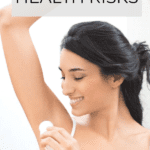
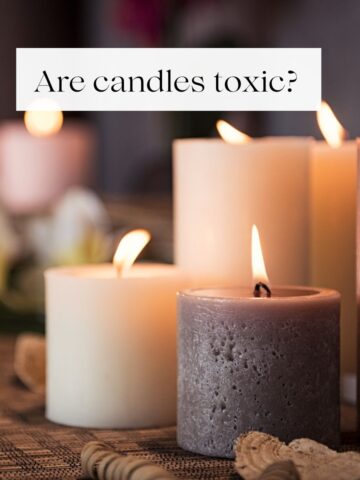
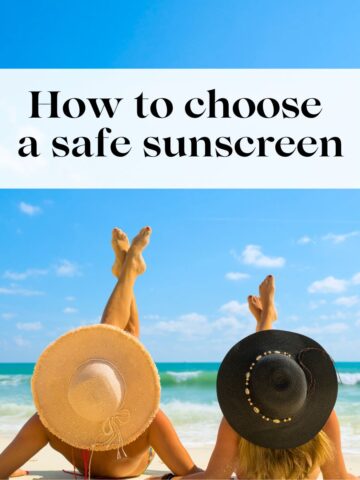

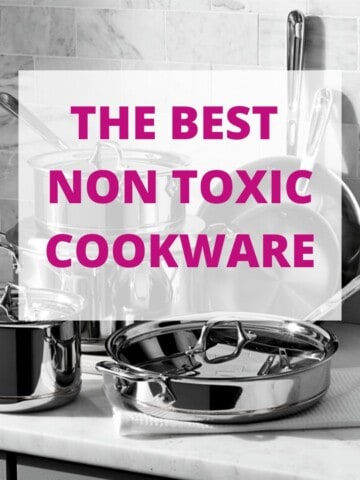
Leave a Reply